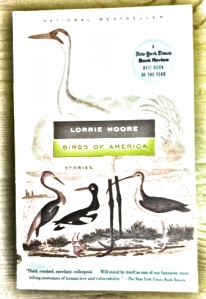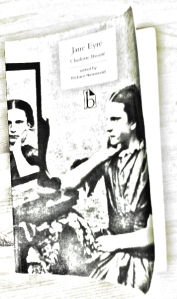 “Life after Life” by Kate Aktinson was a frequent addition on the Best Books of 2013 lists I was perusing at the end of December. So when I stumbled upon “Life after Life” in my local used bookstore, I snatched it up. Now I have to admit, I actually finished this book a couple of weeks ago. I have been busy planning my upcoming 1 year wedding anniversay Europe trip for me and my husband, so I have gotten a little behind in my blogging reviews. So I am going to be posting a couple of late reviews this week before we jet off for Paris on Saturday.
“Life after Life” by Kate Aktinson was a frequent addition on the Best Books of 2013 lists I was perusing at the end of December. So when I stumbled upon “Life after Life” in my local used bookstore, I snatched it up. Now I have to admit, I actually finished this book a couple of weeks ago. I have been busy planning my upcoming 1 year wedding anniversay Europe trip for me and my husband, so I have gotten a little behind in my blogging reviews. So I am going to be posting a couple of late reviews this week before we jet off for Paris on Saturday.
Atkinson’s book explores a unique idea: what if you could live your life over and over again? I was slightly confused for the first 20 pages or so, so let me clarify how this living life again and again works for the main character, Ursula. Every time she dies, her life starts over again….back to her date of birth on February 11, 1910. But each time her life starts over, a little detail may change. For example, the first time her birth story is told, little Ursula dies. A couple pages later, her birth story is told again but in this version, the doctor arrives in time to save her. Ursula is not a time traveller; her life story just gets retold over and over again; but, as she relives her life, she retains an intuition from events in her past life. For example, when she approaches a scene which caused a tragedy or resulted in her death in a previous life, her intuition tells her what must be done. For example, that she needs to prevent Bridget from going to London at all costs or punch her brother’s friend, Howie, in the face or run out to the lane to walk Nancy home.
Atkinson brilliantly describes these life scenes. I found myself hardly able to put the book down. There is a particularly humourous part of the book where Ursula has a hard time avoiding the Spanish flu and dies four times before she is able to prevent the event that causes her to catch the flu. With each attempt, the chapter of the event gets shorter and the description of her death more brief, which seems to reflect the narrator’s frustration that she has died of the flu yet again.
Each time Ursula restarts her life, she gets a chance to have a different life and Atkinson gets a chance to weave another tale with this narrator. In one of her lives, she faces horrific events like rape and domestic abuse. In the next, she seems to learn from that life by ensuring the rape incident does not happen, and living her life in confident singleness. Atkinson paints a picture of various life paths that a woman in that period could have, which makes the book even more fascinating to see one character living out so many different lives. In particular, Ursula’s life during the Blitz in London is described so vividly and captured the emotions of the time so well, that these scenes alone are worth recommending the book to others.
Unfortunately, I did end the book feeling disappointed. Atkinson had such a unique concept and writes so brilliantly, but I expected her to do more with the book. She toys with the idea of deja vu with Ursula as a child. Ursula has flashbacks from her previous life so she anticipates what present she will get for Christmas or her’s sister’s response to a situation. Yet once Ursula becomes an adult, this idea of deja vu or knowledge from a previous life is rarely brought up. I thought Atkinson could have used this concept more to her advantage in advancing the story and growing Ursula as a character within this unique life timeline. In particular, I was surprised that Ursula does not recall her daughter or feel any pull towards living her life in the way that brought her daughter into existence. The connection she feels to her child and the way they died is an event that I thought would have stayed with Ursula, and directed some of her decisions in the life after. The book description and the first chapter also led me to believe that Ursula would be trying to do more to change world events, but after one attempt on Hitler’s life, Ursula returns to her old life patterns. In the last few life restarts, Ursula seems to forget her previous life experiences. She prevents some tragedies but doesn’t prevent others, and there is no explanation why. Atikinson could have taken better advantage of the deja vu concept and the multiple lives Ursula had; and, could have shown a progressive growth in how Ursula could change her world and save those around her.
“Life after Life” is an excellently written book with a unique concept that provides a little bit of everything for the reader to munch on: family, marraige, war, singleness, death, childhood, memory. But I felt that Atkinson could have done more with the spread should had before her with this “life after life” narrative. Still definitely worth a read!
4/5 bacon strips

